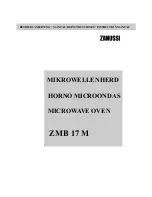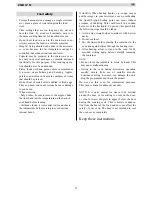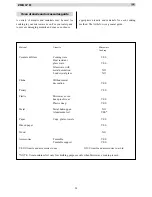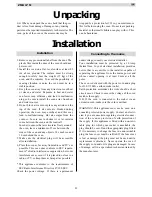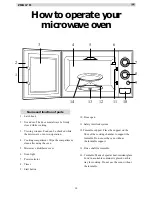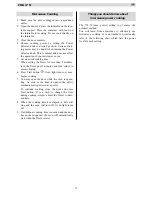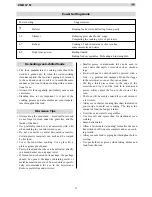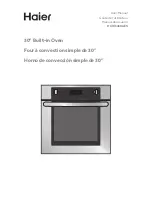
33
ZMB 17 M
t
Power Setting Guide
Power Setting
00
Suggested use
Defrost
Keeping foods warm, defrosting frozen pastry.
3-5
Simmer
Reheating precooked foods, soups.
Completing the cooking cycle of pot roasts.
6-7
Reheat
Cooking of baked custards or cheese cakes.
some casseroles and stews.
8-9
High (max power)
Boiling liquids.
Baking fish or vegetables. Preheating a browning dish.
• The food manufacturer’s cooking time should be
used as a guide only. If, when the stated cooking
time has expired, the food isn’t piping hot, return it
to the oven and cook it until it is, in much the same
manner as you would when cooking with a conven-
tional oven.
• Always stir food regularly, particularly sauces and
casseroles.
• Standing time is very important, it is part of the
cooking process and also ensures an even tempera-
ture throughout the food.
• Always keep the oven clean – avoid spill-overs and
do not forget to clean under the glass tray and the
inside of the door.
• Use preferably round or oval casseroles with a lid
when cooking in your microwave oven.
• Do not use metal or metal decorated casseroles.
Certain plastic materials can melt and be warped
by hot food.
• Cover the food when cooking. Use a glass lid, a
plate or grease proof paper.
• Pastry, bread and the like can be defrosted directly
in a bread basket or on a paper towel.
• If frozen food is heated in its package, the package
should be opened. Packages containing metal or
metal decoration must not be used unless specifi-
cally recommended for use in the microwave.
Remove metal clips and wire ties.
• Smaller pieces of aluminium foil can be used to
cover parts that easily overcook such as chicken
legs.
• Food with peel or skin should be pierced with a
fork – e.g. potatoes and sausages. Do not boil eggs
in the microwave oven as they can explode.
• Put large, thick pieces close to the edge of the
casserole and try to cut the food in to even-sized
pieces. Always place the food in the centre of the
oven.
• The food will be evenly cooked if you stir or turn it
a few times.
• Always set a shorter cooking time than indicated in
your recipe to avoid over cooking. The larger the
amount of food the longer it takes.
• Use little or no water for vegetables.
• Use less salt and spices than for traditional oven
cooking.
• Season afterwards.
• Allow a few minutes “standing” time after the oven
has switched off to ensure complete and even cook-
ing results.
• Always ensure food is piping hot throughout before
serving.
• Use pot holders or gloves when taking dishes and
food from the oven.
Microwave Tips
Re-heating cook-chilled foods

